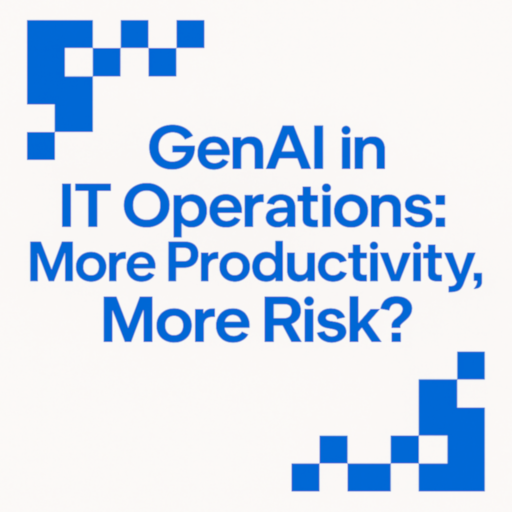GenAI in IT Operations: More Productivity, More Risk?
Over the past year, GenAI has made its way into nearly every corner of IT — and operations teams are no exception. From automated ticket summaries to AI-assisted scripting and anomaly detection, generative tools are becoming part of the admin’s daily workflow.
Sounds great, right?
Mostly, yes. But as adoption spreads, so do the questions — especially around data exposure, model trust, and long-term accountability. Because integrating GenAI into IT workflows isn’t just about faster responses. It’s about trusting a system to see and act on your infrastructure.
Where It’s Already Helping
Ask around, and you’ll find plenty of use cases where GenAI is delivering real value — even in mature enterprise environments:
– Natural-language search for logs and config data
– Automated response suggestions in service desks (ITSM platforms)
– Script generation or modification in shell, Python, Ansible, PowerShell
– Correlating monitoring alerts with remediation steps
Vendors are building this directly into tools like ServiceNow, Atlassian, Microsoft Copilot, and observability platforms like Dynatrace and New Relic. And admins are starting to rely on it for day-to-day “get it done” tasks.
But that reliance comes with trade-offs.
The Big Red Flags
The moment you let a GenAI system analyze tickets, configs, or logs — you’re feeding it potentially sensitive information. Even if the tool is local, or supposedly ‘secure’, the risk of leakage, hallucinated outputs, or invisible model bias is still there.
Security teams are particularly worried about:
– AI tools suggesting incorrect or unsafe commands
– Lack of visibility into decision-making (no audit trail)
– Vendor models trained on customer data — intentionally or not
– Shadow usage of public AI assistants in the absence of policy
And let’s be honest — once GenAI starts getting embedded into your ITSM or CMDB stack, the blast radius gets bigger.
Where the Line Needs to Be Drawn
So what’s the play for responsible IT leaders?
– Keep GenAI in “read-only” mode unless you have strict oversight. Let it suggest, not act.
– Classify input/output zones. Don’t let unvetted queries touch sensitive logs, passwords, or privileged configs.
– Define escalation boundaries. GenAI might help the L1 team, but it shouldn’t patch servers or edit firewall rules — yet.
– Monitor what’s actually being used. Track adoption like any new software: visibility, controls, and usage analytics matter.
Final Thought
There’s no denying that GenAI is making IT teams faster. But with that speed comes risk — not just technical, but operational and reputational.
The goal isn’t to block the tools. It’s to adopt them with your eyes open, with the right guardrails, and with the understanding that “automated” doesn’t mean “invisible.”
Because in operations, the last thing you want is an AI that quietly does the wrong thing — faster than any human could’ve.

